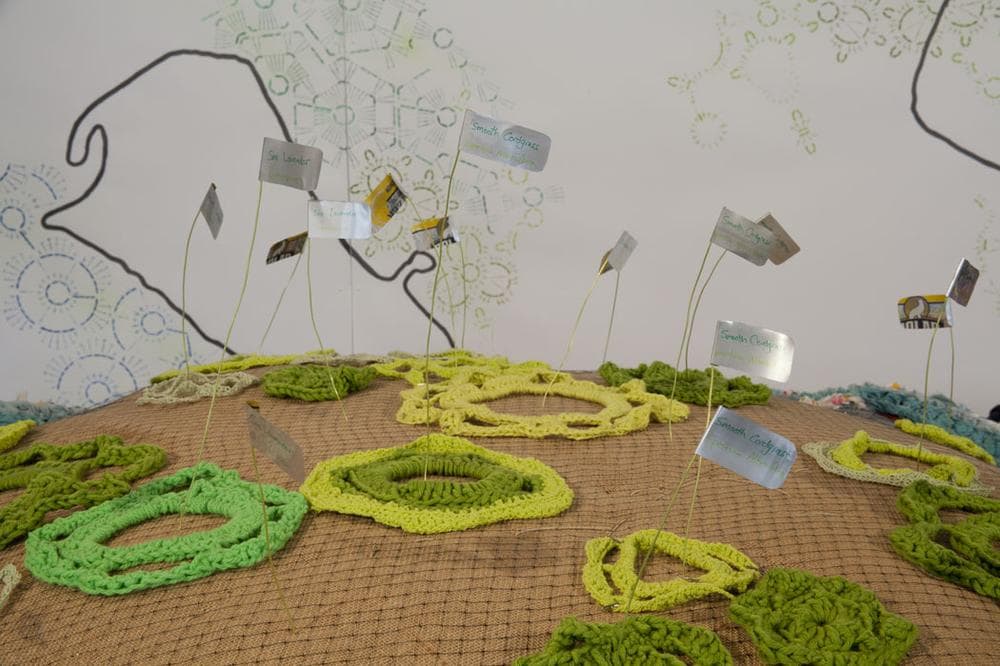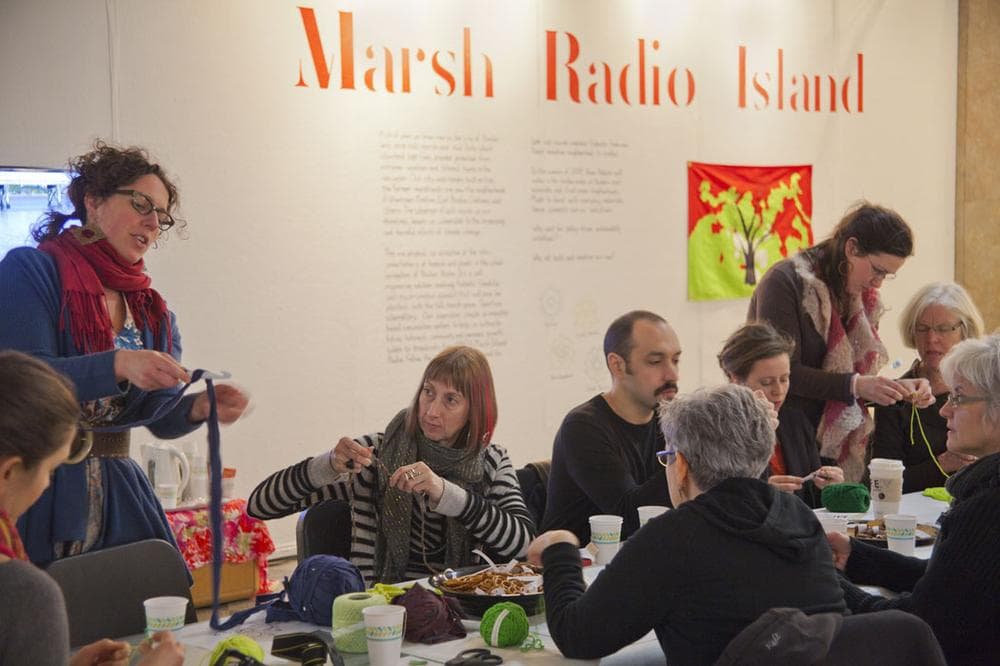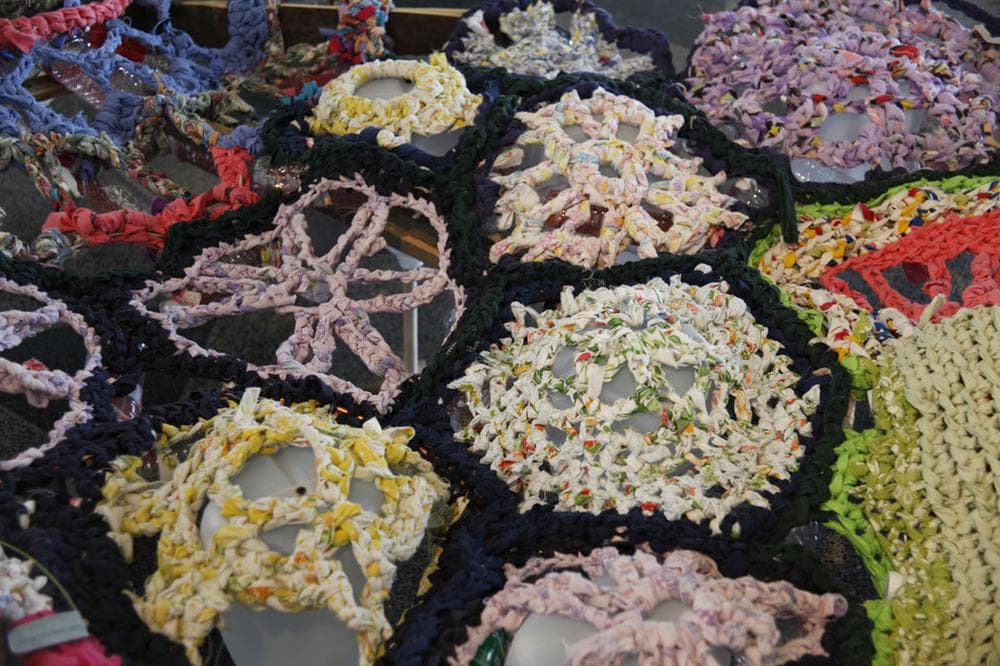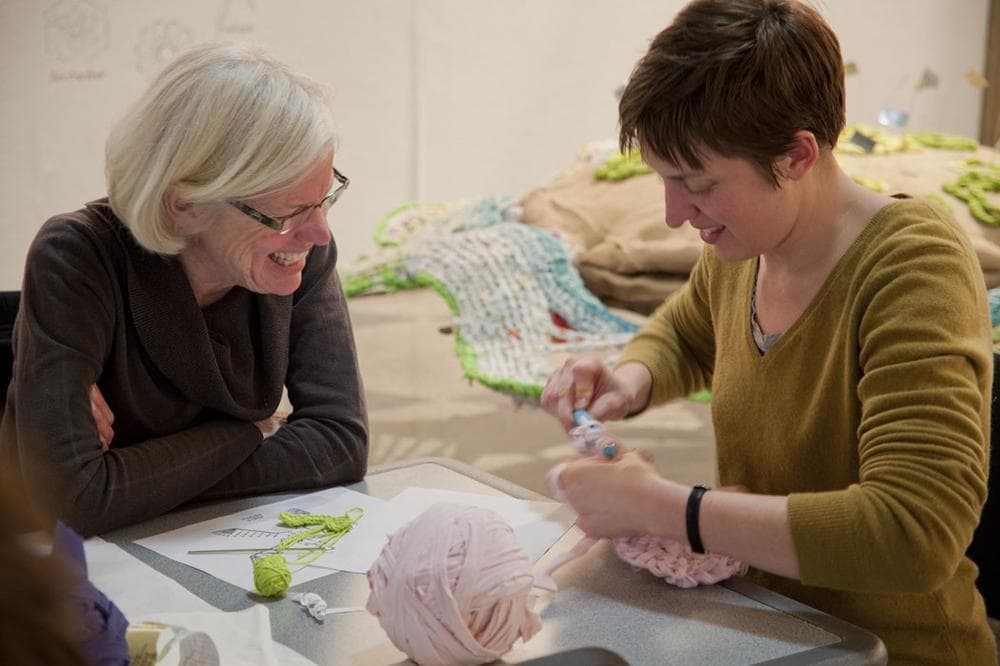Advertisement
Artists Propose Stemming Tide Of Global Warming With Artificial Marshes
Can artificial islands help mitigate the damage of global warming to communities around Boston Harbor? That’s the question people gathered at Boston University’s 808 Gallery to ponder during a “collaborative crochet session” last Wednesday evening.
The “Stitching the Shore” get-together, organized by Andi Sutton and Jane Marsching of the local art collective Plotform, invited people to help them crochet bindings for rafts that they aim to use as floating planting beds for salt marsh grasses in Boston Harbor. It’s part of their wetlands restoration pilot project that they hope will “increase biodiversity, improve water quality, and protect the shoreline.”
The idea is that artificial floating marshes could augment existing marshes around the harbor, which can serve as buffers against storm surges; host plants that help filter toxins from polluted water; and provide shelter to birds, crustaceans and fish.
“Extreme sea level rise combined with extreme shore level rise to make these hundred-year [storm] events become more frequent,” Marsching says. Salt marshes, she says, are “essentially big sponges that slow down the water.” From Chelsea to Quincy, “it’s almost all hard. Once upon a time it was all tidal flats and salt marshes, which were filled in over the years. [Our project] is bringing back these natural adaptive measures.”

Inspired by the artificial floating wetlands developed by the ecological restoration firm Biohabitats to “improve water quality and habitat” in Baltimore Harbor, Plotform is exhibiting their prototype rafts roped together to form a 10-foot-long “island” in the BU exhibit “Alternative Visions/Sustainable Futures” (808 Commonwealth Ave., Boston, through April 20). Coconut mesh and bird netting become mats for planting. Plastic bottles inside help them float. But it’s not all practicality—crocheted decorations on top resemble marine flora.
“It’s very important to us that this is not just a geo-engineering solution. We’re trying to use tropes of art to create imaginative solutions,” Sutton says. “What if Boston Harbor was covered with a giant salt marsh cozy?”
Their aim is to work over the next year with scientists and community organizations addressing sea level rise to build and link more rafts. Then they hope to anchor their marsh-rafts along the shore of local coastal communities as part of exhibitions and community events generating awareness for their project.

The project also includes solar-powered speakers on the “island” that would broadcast a mix of music (Johnny Cash’s “Five Feet High and Rising,” Led Zepplin’s “When the Levee Breaks”) and ecological statements via “WMIR, Marsh Island Radio, at 990 AM on the radio dial … Community radio letting you talk to the marsh and letting the marsh talk to you.”
“We wanted to do a project about empathy and considering our communication and relationship with plants as a two-way street,” Marsching says. “Trying to think of plants as caring and protective of us. And trying to think about what would it mean for us to be caring and protective and communicative with them.”
“It’s really thinking about using DIY [do it yourself] as a bridge to questions of adaptation in the face of climate change,” Sutton says.
Participants “are actually creating real solutions to sea level rise in the harbor,” Marsching says. “They are actually, stitch by stitch, doing something about it.”


This article was originally published on March 12, 2013.
This program aired on March 12, 2013. The audio for this program is not available.
